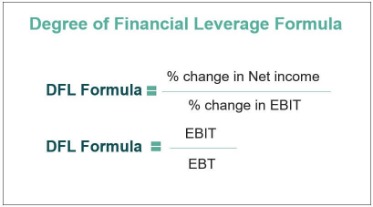
Why not set up QBO to make deposits directly into the bank account as a default? This sounds like a good idea in theory, and it even works when you are a small solopreneur. You’ll find that there are not enough hours in the day, or days in the week, to get all your work done.
Related Posts:
- The purpose of the undeposited funds account is to help you record which client paid against which invoice, especially when money is being deposited in bulk.
- It’s not an actual bank accounts which is why there’s no option to reconcile it in Total Office Manager.
- While recording sales receipts for payments outside of QuickBooks, sales receipt payments are put into the Undeposited Funds account by default.
- Large businesses, in particular, may delay depositing money for several days because it is tedious to deposit one check at a time throughout the working week.
- We offer a variety of personalized bookkeeping and accounting services.
It’s good to periodically check your Undeposited Funds account and clear out any payments waiting to be moved. Here’s how to put payments into your Undeposited Funds account before you combine them. Note that if you record receipts using the Bank Register window, you will need to select the Undeposited Funds account yourself.

Invoice payments you process outside of QuickBooks:

Then you can deposit the payments to your bank account later. If you would rather have payments automatically post to a bank account than to an Undeposited Funds balance, turning off the feature is simple. First, reconcile your bank accounts to make sure you have recorded all the deposits you have made. Once you have determined all deposits have been recorded properly, open the Bank Deposit screen again and review what is in the Undeposited Funds account. Another way to skip the tedious process is by accepting credit cards or another online payment option such as ACH. Doing so allows you to skip the longer workflow because each transaction gets processed as a single transaction, meaning there’s not a chance for it to show up as a lump sum payment on your bank statement.
Want to Learn More?
However, the undeposited funds account is an alternative option that can help you keep track of your money at a higher level. The Undeposited Funds Account in QuickBooks is a temporary account holding payments that are planned to be deposited to the bank account later. It allows you to combine a number of payments into a single deposit https://www.wave-accounting.net/ if needed. Following the simple procedure described in this article, you’ll be able to make your reconciliation process smoother. In the above scenarios, you’ll likely find the transaction in the undeposited funds account. So be sure to double-check that you properly complete the bank reconciliation to clear the balance.
Keeping the Undeposited Funds account accurate
Let me clarify things to reduce your extensive time spent on data entry in QuickBooks Desktop (QBDT). Furthermore, generating reports can help verify if everything is accounted for accurately and keep all your entries intact. You are always welcome to post in the community if you have any other concerns or questions. If it’s still the same, I’d suggest contacting QuickBooks Care team. They have the tools to verify your account and to further check to get to the bottom of this. If you see that the amount was cleared, you can go back to the regular browser and clear its cache to avoid getting the same issue in the future.
Now you can select an Undeposited Funds or another account each time you create a sales receipt. When you follow the workflow to receive payment for an invoice, QuickBooks automatically puts them into Undeposited Funds. This makes reconciling your bank account easy, because you’ll be able to match up the bank statement deposit amount with https://www.kelleysbookkeeping.com/brigade-outsourced-accounting-for-small-businesses/ the amounts you’ve recorded in AccountRight. Undeposited funds is useful for companies that collect money on a regular basis, but don’t actually deposit the money regularly. Large businesses, in particular, may delay depositing money for several days because it is tedious to deposit one check at a time throughout the working week.
In other words, what you see on your bank statement does not match what you see on your itemized bank deposit slip. Undeposited Funds is a special account created by QuickBooks as a clearing account for payments that have been received but not yet deposited into the bank account. The easiest way to picture this account is as the top desk drawer. As the money comes in each day, it is entered into the computer, and placed in the top desk drawer. At the end of the day, the drawer is opened and money is scooped up and taken to the bank.
If you see a balance in Undeposited Funds on your balance sheet, you need to investigate. In order for your financial statements to be accurate for the year, you need to record the payment as being navigating freelance taxes in 2020 received on Dec. 31. However, the payment will not clear your bank until Jan. 2 of the next year, at the earliest. We believe everyone should be able to make financial decisions with confidence.
These are all possibilities if you have an Undeposited Funds balance on your Balance Sheet when you know there is not any money in-process to you. For credit card processing, it may fund overnight, it may be the better part of a week before the funds become available at your bank. Some credit card processors pay their clients net of merchant service fees. Some only charge for merchant service fees once per month, some charge separately but with each individual transaction. For each of these, if, instead of depositing payments to undeposited funds and instead you mark them direct to the bank account, you will be adding confusion.
At that point, the make deposit function is completed in QuickBooks to pull the undeposited funds onto a deposit slip. The total of this deposit slip should agree with the bank statement at the end of the period. When it comes to keeping your finances straight, QuickBooks does a brilliant job of providing simple yet effective tools to see the flow of money in and out of your company. Using features such as undeposited funds accounts means that you benefit from a more robust accounting system, with more checks and balances and a better understanding of where your money is at all times.
It can be frustrating to correct issues in QuickBooks when they happen, but you can avoid them by using the proper accounts for the proper transactions. If you run into trouble along the way, don’t hesitate to reach out to us. CMP would be happy to help you make the most of your QuickBooks experience and ensure your accounts are up to date and accurate. We provide a vast range of Quickbooks services to suit all your needs. Sometimes funds are “in transit” for less than a day, as when a customer pays you with cash or a check and you take the money to your bank at the end of the day.
When you put money in the bank, you often deposit several payments at once. For example, let’s say you deposit five GBP £100 checks from different customers into your real-life checking account. Your bank records all five checks as one GBP £500 deposit.
In this article, we’ll show you the step-by-step process of using the Undeposited Funds account in QuickBooks Online. We’ll also show you how to add and remove a payment from a deposit and how to delete an entire deposit. You’ll also notice that when you click on the deposit, it expands and you can choose to edit.












Leave a reply